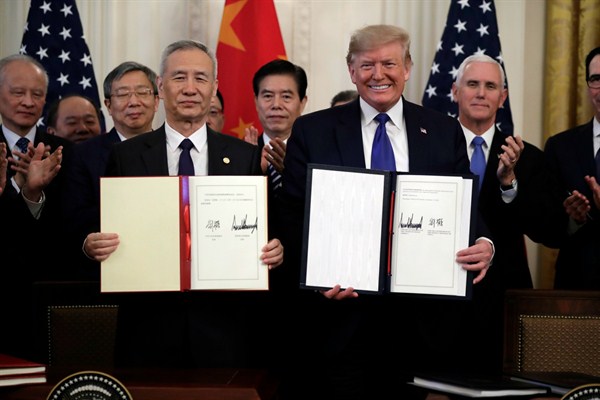Editor’s Note: Every Wednesday, WPR Newsletter and Engagement Editor Benjamin Wilhelm curates the week’s top news and expert analysis on China.
With the signing of a “phase one” trade deal Wednesday, the United States and China have finally pressed pause on their protracted trade war. At a White House signing ceremony that was attended by Chinese Vice Premier Liu He, President Donald Trump called the pact a “sea change in international trade.” But what does it actually accomplish?
At the center of the agreement are commitments from China to purchase an additional $200 billion in American goods and services over two years. Beijing is expected to remove some tariffs on American products, while Washington agreed to partially roll back levies it imposed in September. But the majority of tariffs Trump has slapped on $360 billion worth of Chinese imports will remain in place, and the deal allows for punitive measures if China does not live up to its obligations.

